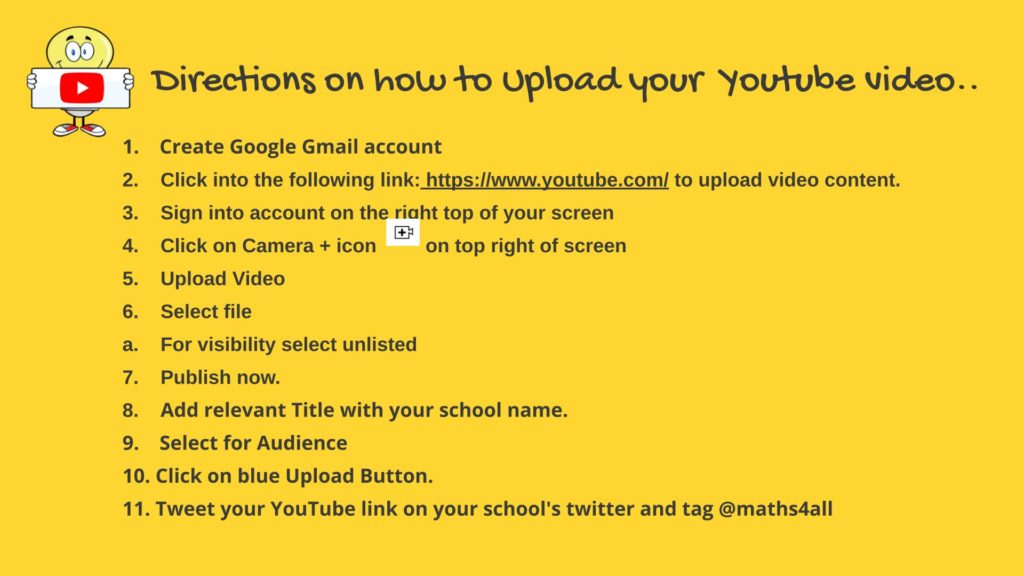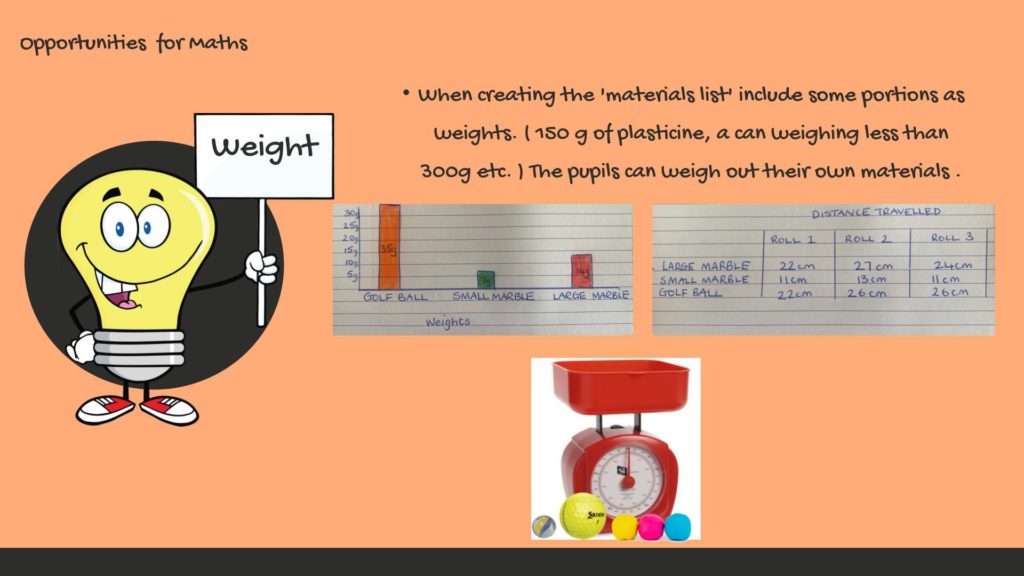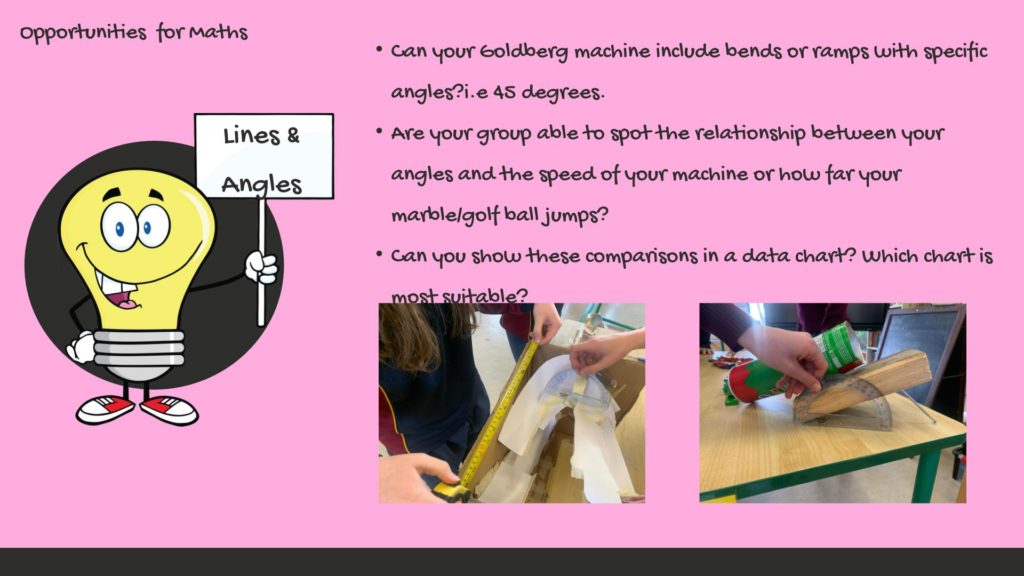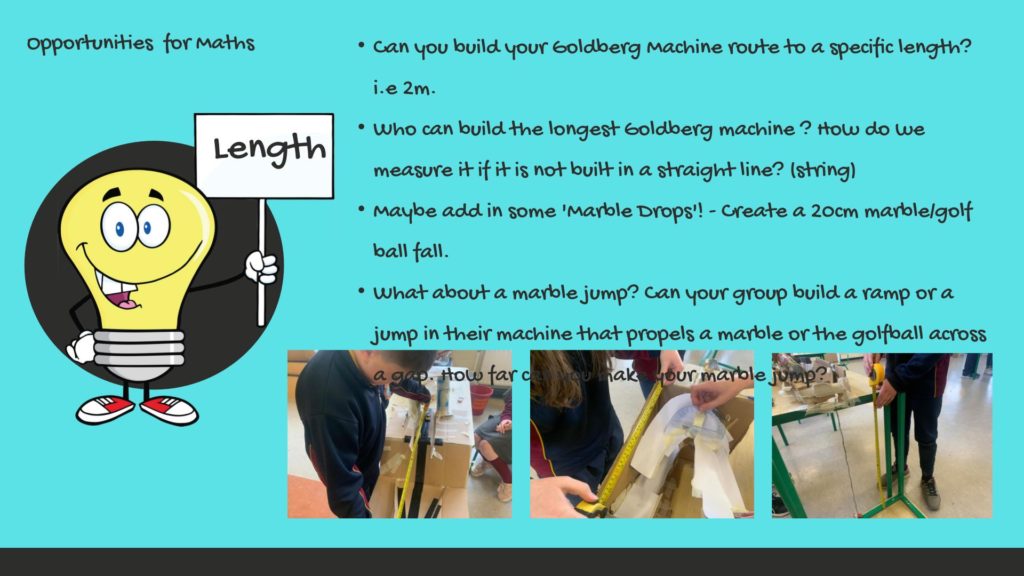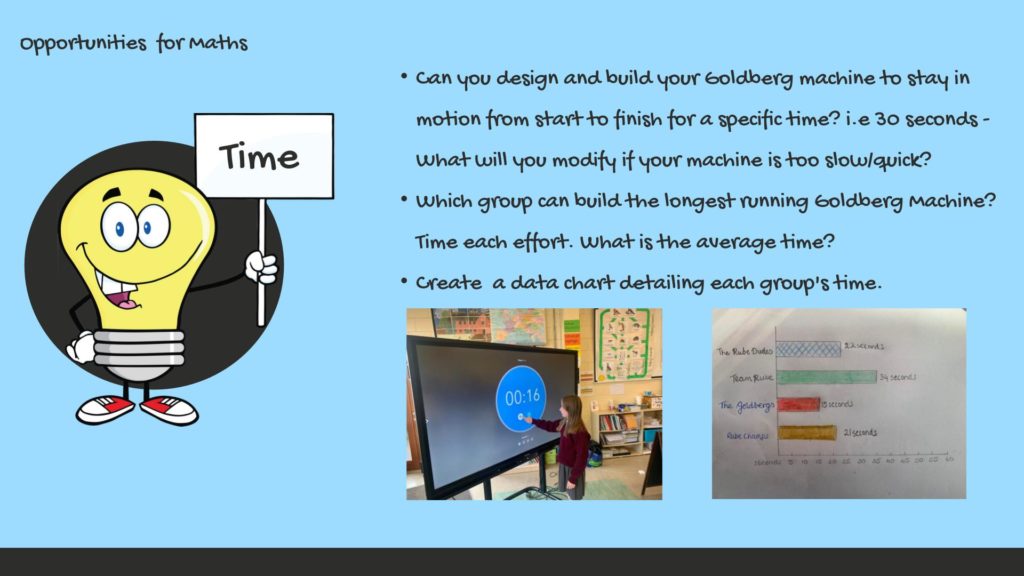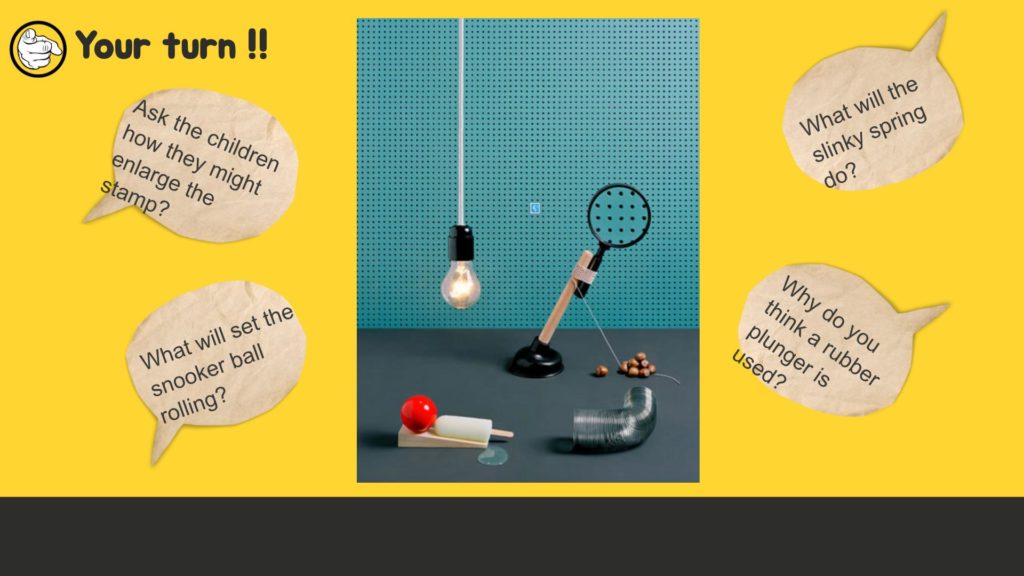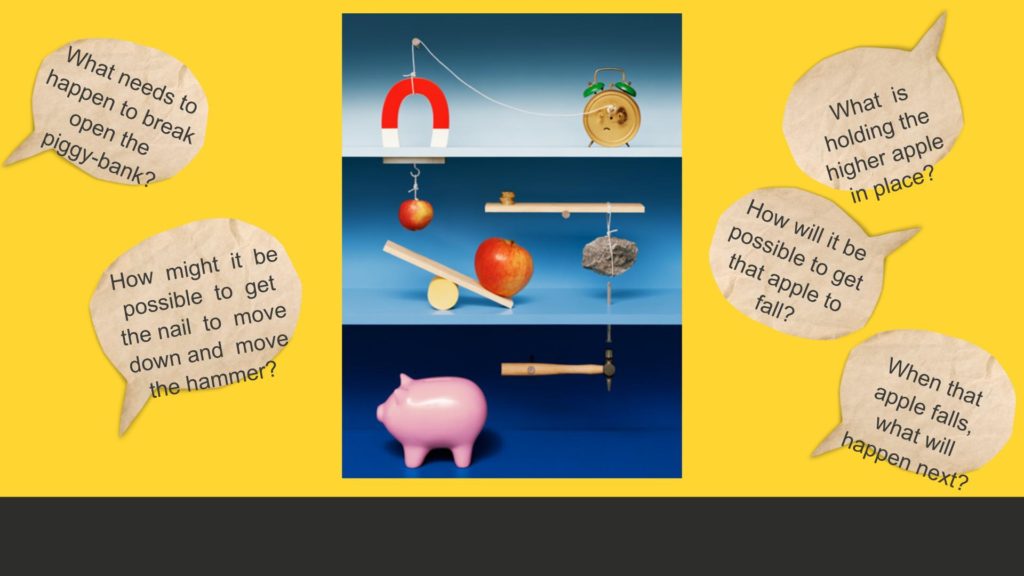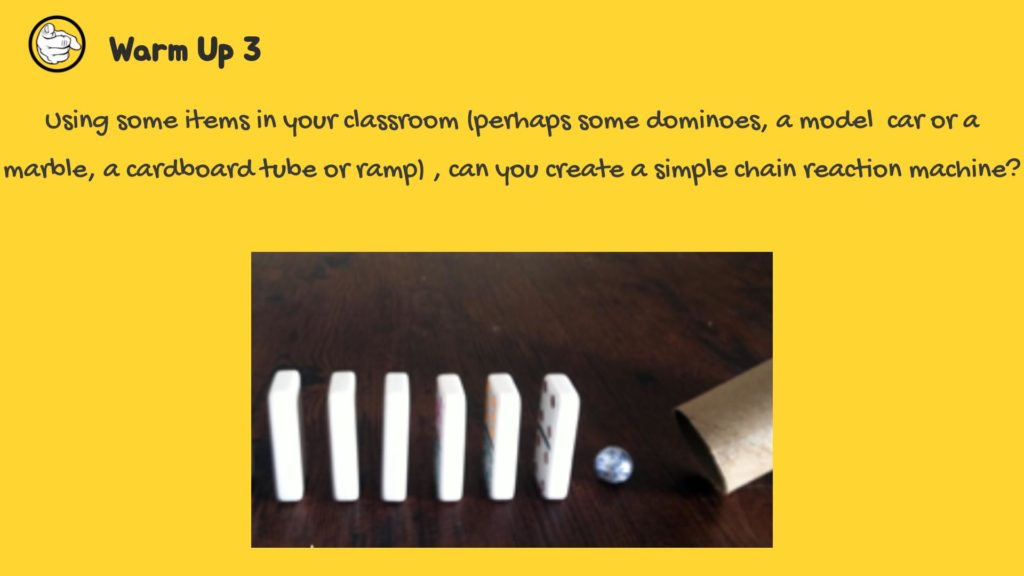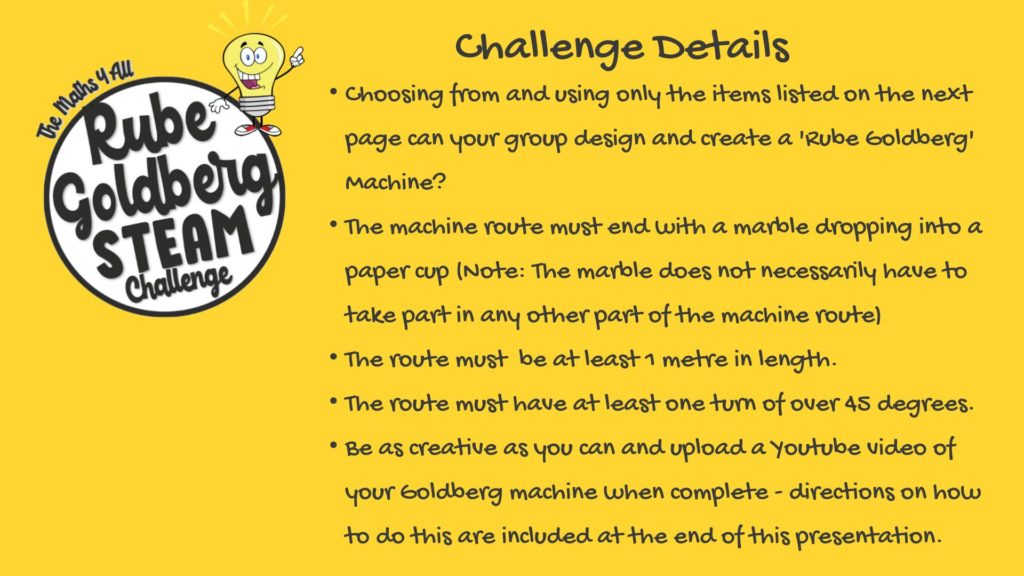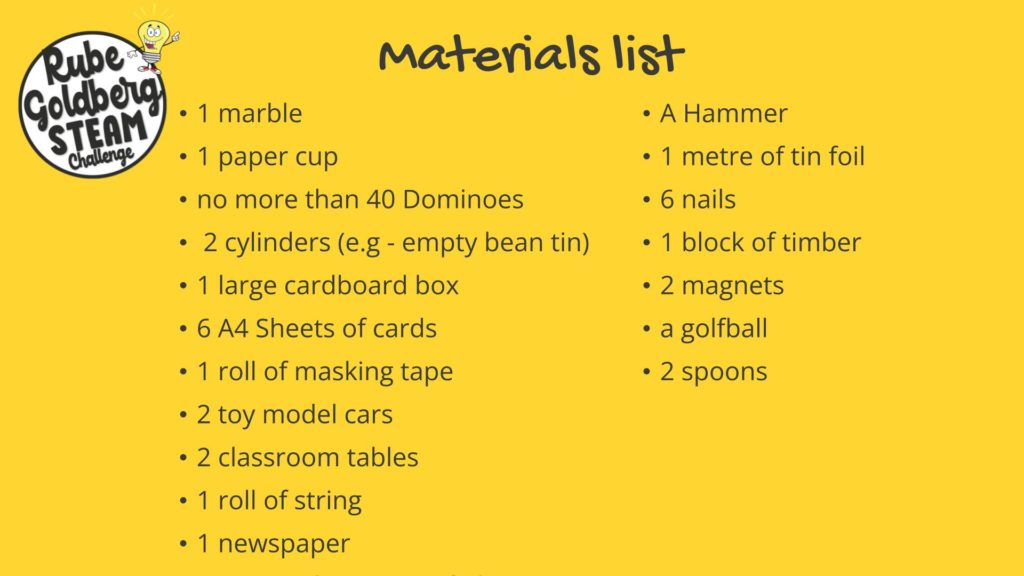Developed by Aaron Carroll
CLASS
6th class (but can be adapted for many class levels)
STRAND
Number
LEARNING OUTCOME LABEL
Measures, Shape & Space
Goals of these activities
It is envisaged that these activities may take place over a series of lessons to allow in-depth exploration of relevant scientific and mathematical ideas.
The children will:
- Learn what a Rube Goldberg or chain-reaction machine is
- Examine Rube Goldberg machines and make predictions about what will happen and why.
- Design simple Rube Goldberg machines using classroom materials (dominos, toy cars etc.)
- Design and evaluate more complex Rube Goldberg machines to given mathematical or other specifications.
Maths
- Measurement involves comparison. Measuring length involves comparing the length of an object with the length of another object- this could be a non-standard unit (e.g., lollipop stick) or a standard unit (e.g., centimetre/metre). The smaller the unit the more precise the measurement.
- Standard tools such as rulers or protractors let us read measurements from a scale. Reading measurements from a scale involves recognising what the different marks on the scale represent.
- Angle is a measure of turn or rotation. As with all measures, a knowledge of benchmarks, and how to use these to estimate, is valuable when engaging in measurement of angles. Useful benchmarks include fractions of a turn such as half a turn (180?) or a quarter of a turn (45?).
Science
- While working on this project the children will collaborate to Work Scientifically developing such skills as questioning, observing, predicting, investigating and experimenting, estimating and measuring, analysing and recording and communicating.
- The Designing and Making science skills of exploring, planning, making and evaluating are also key curricular objectives enabled with this project.
- The lesson investigates the Science Strands of Energy and Forces as well as Materials.
- The children are enabled to identify and explore how objects and materials can be moved. They will explore the effect of friction on movement and how it may be used to slow or stop moving objects. The project also allows the pupils to come to appreciate that gravity is a force and become aware that objects have weight because of the pull of gravity.
Maths:
- Applying and Problem Solving
- Communication and Expressing
- Integrating and Connecting
- Reasoning
- Implementing
- Understanding and Recalling
Science:
- Questioning
- Observing
- Predicting
- Investigating and Experimenting
- Estimating and Measuring
- Analysing – (Sorting and Classifying, Recognising Patterns, Interpreting)
- Recording and Communicating
STEAM:
- Problem Solving
- Reasoning
- Critical Thinking
- Pupil Led Enquiry
- Collaboration
Presentation available here if desired
1 marble
1 paper cup
no more than 40 Dominoes
2 cylinders (e.g – empty bean tin)
1 large cardboard box
6 A4 Sheets of cards
1 roll of masking tape
2 toy model cars
2 classroom tables
1 roll of string
1 newspaper
no more than 150g of plasticine
A hammer
1 metre of tin foil
6 nails
1 block of timber
2 magnets
a golfball
2 spoons
Activity
Key Questions
Introduction
Introduce who Rube Goldberg was using the presentation. Display and discuss some of the photos and videos of Rube Goldberg machines.
Key Questions
- What do you notice here?
- What do you think will happen?
- Why?
Examining some machines in depth
Key Questions
- What do you think will happen?
- Why?
- What would happen if…? What will happen next?
- If you could change one thing, what would it be?
Building your own machine
Key Questions
- Why did you decide on these materials?
- What are you aiming to do?
- How did you know where to place the …?
- How might you improve this?
Challenge
Set certain constraints on how the Rube Goldberg machine should be constructed.
- The machine route must end with a marble dropping into a paper cup (Note: The marble does not necessarily have to take part in any other part of the machine route)
- The route must be at least 1 metre in length.
- The route must have at least one turn of over 45 degrees.
Key Questions
- How do you know that this measures…?
- Can you estimate how long it is/how long it will take/how big the angle is?
- How might we measure …?
- How could we be more precise?
Share your work
Using a ‘gallery walk’ approach, have students move around the classroom to observe each machine in action. Have groups explain what they tried to do and justify the choices they made. Ask the children viewing the machines to share what they link about each machine and any ideas for improvements. .
If possible, take videos of the machines in action and upload them to YouTube following the directions here. Tweet your YouTube link on your school’s twitter and tag @maths4all
